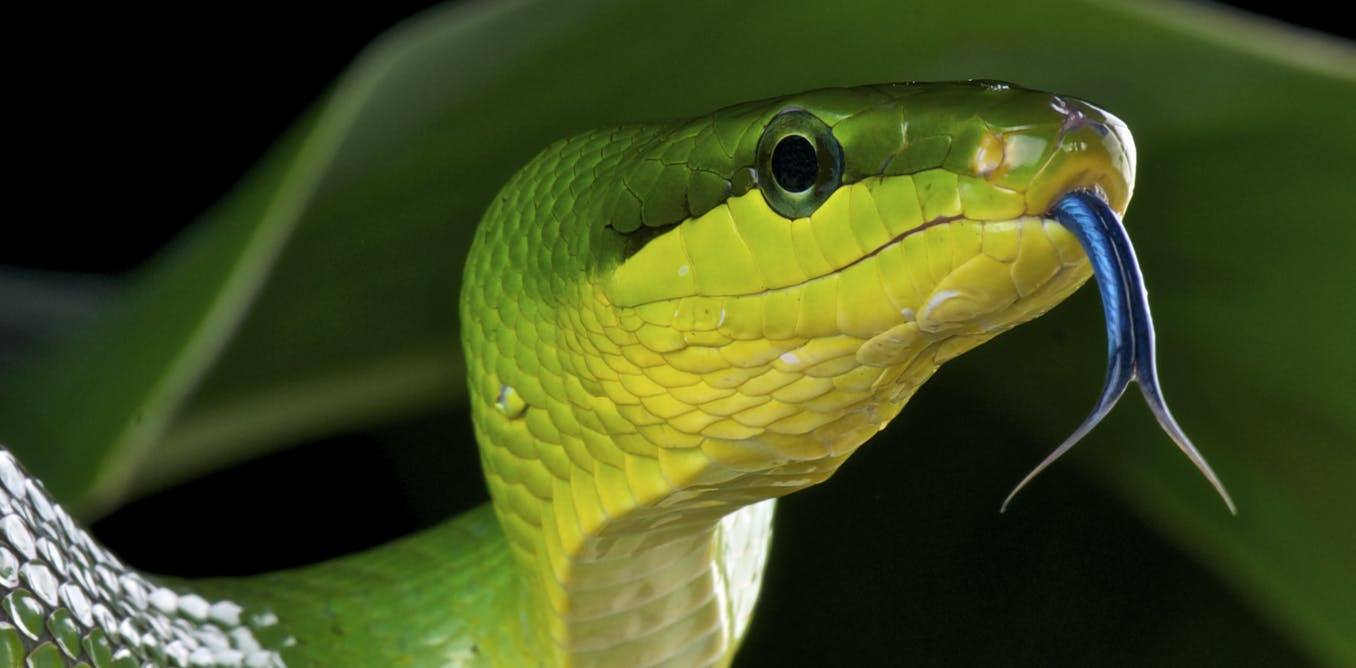Kurt Schwenk in The Conversation:
 As dinosaurs lumbered through the humid cycad forests of ancient South America 180 million years ago, primeval lizards scurried, unnoticed, beneath their feet. Perhaps to avoid being trampled by their giant kin, some of these early lizards sought refuge underground.
As dinosaurs lumbered through the humid cycad forests of ancient South America 180 million years ago, primeval lizards scurried, unnoticed, beneath their feet. Perhaps to avoid being trampled by their giant kin, some of these early lizards sought refuge underground.
Here they evolved long, slender bodies and reduced limbs to negotiate the narrow nooks and crevices beneath the surface. Without light, their vision faded, but to take its place, an especially acute sense of smell evolved.
It was during this period that these proto-snakes evolved one of their most iconic traits – a long, flicking, forked tongue. These reptiles eventually returned to the surface, but it wasn’t until the extinction of dinosaurs many millions of years later that they diversified into myriad types of modern snakes.
As an evolutionary biologist, I am fascinated by these bizarre tongues – and the role they have played in snakes’ success.
More here.
